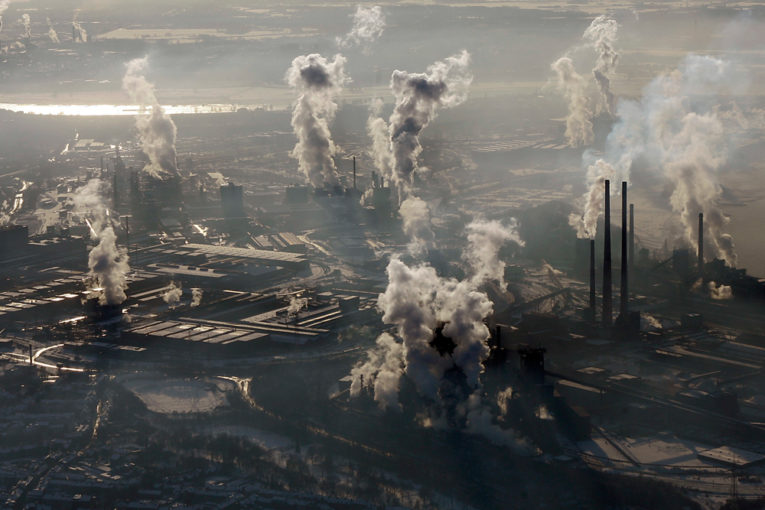
Even after reaching their highest in a decade, the cost of carbon in Europe isn’t anywhere close to where they need to be to dramatically reduce greenhouse gas emissions.
Carbon futures in the EU’s Emissions Trading System moved past their highest point in a decade this week, surpassing 20 euros (US$23) a ton. Although the five-fold leap in just over a year has resurrected a moribund market, the price of the permits is still too low to do anything but give industry a gentle nudge toward using cleaner fuels.
At least 50 euros a ton is needed to stimulate the most crucial technologies that halt the flood of greenhouse gas emissions into the atmosphere, according to analysts at the International Energy Agency and the private researcher Carbon Tracker. Those include carbon capture and storage, which siphons atmosphere-damaging pollutants from industrial smokestacks and sticks them underground permanently.
“Carbon markets are just not delivering change at the scale and pace needed,” said Craig Bennett, chief executive officer of Friends of the Earth. “It’s high time governments used good old fashioned taxes, regulation, and legislation to drive far faster progress.”
China, India
CCS is crucial because deploying those plants would allow nations such as China and India to keep burning coal, something they see as essential to fuel their climb out of poverty.
The IEA says that CCS is a critical part of the plausible scenarios for capping emissions at tolerable levels. It estimates that plants need to account for 14 per cent of all emissions cuts by 2060 to keep global warming to 2 degrees Celsius.
There needs to be a 10-fold increase in carbon capture by 2025 to put it on the right path to restrict global warming, translating to a US$60 billion investment, the IEA said. In order to meet the Paris Agreement around 760 gigatonnes of CO2 emission reductions across the energy sector between now and 2060 will be needed.
“A CO2 price in the range of US$50 to $IS100 a ton is needed to equalize the operating costs of coal and gas-fired power plants in 2025 in the European Union,” the IEA said in a recent report on CCS.
That’s a massive development from where the CCS industry stands now. There are currently 18 large-scale CCS facilities operating worldwide, with five more under construction and a further four in advanced development, according to the Global CCS Institute, a group promoting the technology.
“CCS will be critical in delivering on climate goals, and a rising carbon price is to be welcomed,” said Luke Warren, CEO of the U.K.’s Carbon Capture Storage Association. “However, in the near term, while necessary, it is not sufficient. What is also required are targeted policy interventions that can help bring these technologies into the market.”
Bloomberg.com
You can read more of the news on source
